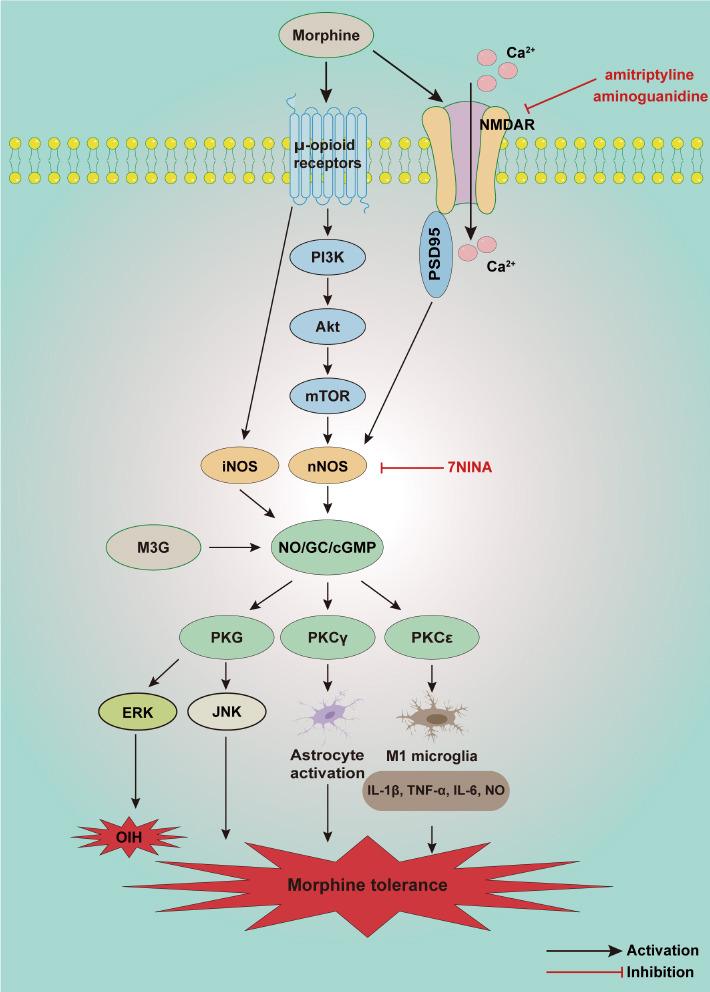Figure 6.

Schematic illustration of potential mechanisms involved in the NO/cGMP signaling pathway in morphine tolerance and opioid-induced hyperalgesia.
Morphine acts on μ-opioid receptors and activates NMDAR, leading to activation of the PI3K/Akt/mTOR signaling pathway then overexpression of nNOS. μ-opioid receptors can also increase the overexpression of iNOS. nNOS and iNOS induce NO production, then excite the NO/cGMP signaling pathway, further activating a variety of protein kinases. PKG/ERK is involved in M3G-induced OIH, and PKG/JNK are involved in morphine tolerance. PKCγ promotes the activation of astrocytes, and PKCε induces M1 microglia and produces numerous inflammatory factors such as IL-1β, TNF-α, IL-6, and NO. Both astrocytes and microglia contribute to morphine tolerance. Akt/PKB: Protein kinase B; cGMP: cyclic guanosine 3′,5′-monophosphate; ERK: extracellular signal-regulated kinase; GC: guanylate cyclase; iNOS: inducible NOS; JNK: c-Jun N-terminal kinase; M3G: morphine-3-glucuronide; mTOR: mammalian target of rapamycin; NMDAR: N-methyl-D-aspartate receptor; nNOS: neuronal NOS; NO: nitric oxide; OIH: opioid-induced hyperalgesia; PI3Kγ: phosphatidylinositol 3-kinase γ; PKCγ: protein kinase Cγ; PKCε: protein kinase Cε; PKG: protein kinase G; PSD95: postsynaptic density protein 95.
